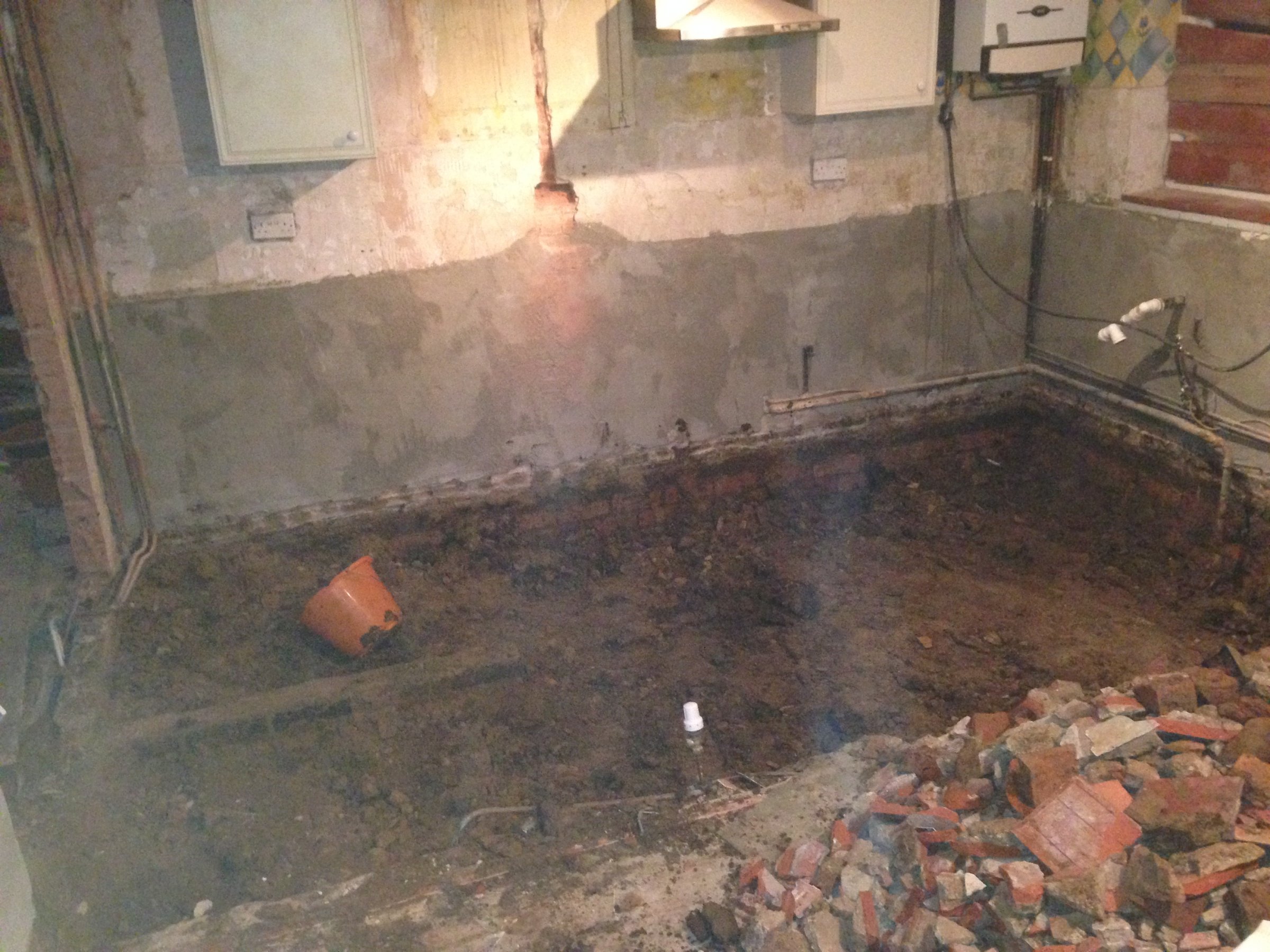bought a 1920's house - surveyor picked up woodworm in the lean too - said potential for inside
and yes a month in the big bloke helping out with the damp proofing put foot thru floor!!
after having a wall down we realise that the solid quarry tiles under several layers ( old laminate floor and lino )
we also realise after knocking the wall down ( make kitchen diner ) that the kitch floor after removing laminate etc is about 15 mm higher than the rotten floor boarded part,,
old kitchen was quite small. 2 m X 3 m
thinking we might dig out the kitchen part say 45 cm of clay and put some hard core broken bricks etc in there and throw some joists accross and redo the whole floor.
would need to treat joists with woodworm stuff
what floor to use? we were thinking we would go wood laminate floor over say green chipboard ( easier to cut I guess? )
or would we better with pine or some other T=G proper floorboards?
I guess will be hard to take up the old floor boards with out damage? not sure how infested they are?
thanks! first post!
and yes a month in the big bloke helping out with the damp proofing put foot thru floor!!
after having a wall down we realise that the solid quarry tiles under several layers ( old laminate floor and lino )
we also realise after knocking the wall down ( make kitchen diner ) that the kitch floor after removing laminate etc is about 15 mm higher than the rotten floor boarded part,,
old kitchen was quite small. 2 m X 3 m
thinking we might dig out the kitchen part say 45 cm of clay and put some hard core broken bricks etc in there and throw some joists accross and redo the whole floor.
would need to treat joists with woodworm stuff
what floor to use? we were thinking we would go wood laminate floor over say green chipboard ( easier to cut I guess? )
or would we better with pine or some other T=G proper floorboards?
I guess will be hard to take up the old floor boards with out damage? not sure how infested they are?
thanks! first post!






